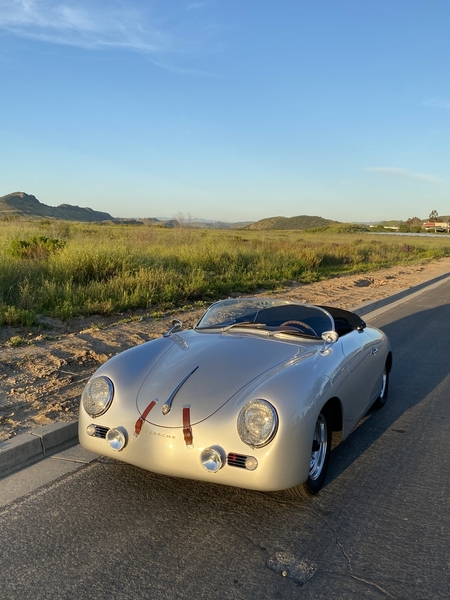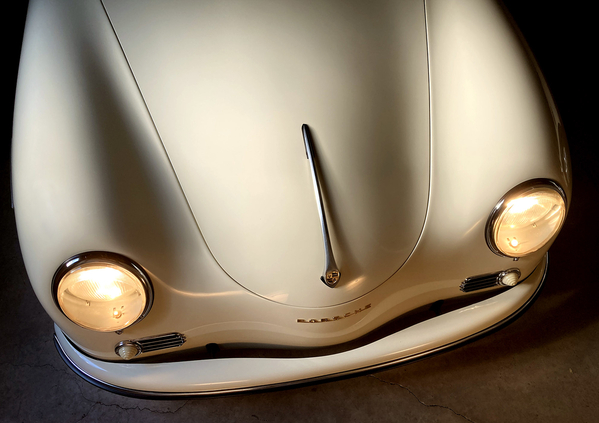While friction perhaps plays a larger role in our lives than we consciously acknowledge, Michael you are correct that I have no reason to be concerned about the slipperiness of my painted outer surface. The magnets behind the body will be securely mounted in place, so one might even argue that a slippery outer surface helps the floating magnet find center. (I was apparently thinking of two attracting magnets held apart by a vertical sheet of perfectly flat, incompressible, frictionless material, sufficiently away from any other magnetic material. They would drop like a feather in a vacuum.)
Thanks for the link Bruce. Lots of cool stuff on KJ Magnetics website. My 10 year old inner child had fun browsing.
Maybe I have misread, but Bruce I assume you are not currently using magnets on you Speedster’s front plate (I can guess how you mount your front plate now), it is something you plan to do with your Spyder. Similarly for you Michael, I think this is something you plan to do with your coupe, correct? If you or anyone else has actually done this, and have successfully driven at speed, with a set of magnets that are strong enough to hold everything in place but not too strong to make difficult or damaging the act of installation and removal, than I would like to hear more details. In the meantime I think I will order a few pair of magnets so I can get a feel for how they work when placed on opposite sides of thick fiberglass and go from there.
Below is my entry for the over thinking award. Actually I don’t need an award, my wife has already given me one for this skill. More than once. Feel free to stop reading now.
KJ Magnetics provides some technical information for their magnets. Below is a plot showing the magnet to magnet pull strength of a pair of 1” diameter rubbery coated magnets. As expected, the pull strength decreases with an increase in distance between them.

I measured the thickness of my fiberglass body at the bottom edge near the front nose of the car and found it to be 0.22”. I will assume that is a reasonable approximation of thickness wherever I would place magnets. The magnet is flat, the interior side of the car body is convex, so the gap between magnets will be more than 0.22”. How much more depends on degree of body curvature, magnet diameter, and thickness of the adhesive layer used to secure the inner magnet. I’m guessing somewhere between 1/4” and 3/8”.
According to the above plot, if the magnets were 1/4” apart from each other each, the pull force would be 8, maybe 8.5 lb. At 3/8”, pull force is about 6 lb. Double these numbers for combined pull force when using two pair of magnets. If 3/4” diameter magnets are used, of course these numbers all decrease, by a significant amount as it turns out.
A combined pull force of about 15 lb using two pairs of magnets kind of sounds about right - it seems sufficient to hold a light weight object in place, and isn’t too strong that installation or removal would be a challenge. A few things give me pause though. First, the plotted pull force is pure axial force, it does not consider lateral/shear force. Second, Aerodynamic load on a flat plate at 75 mph, with buffeting, isn’t small. And if only two pairs of magnets are used the plate will be allowed to rock back and forth a bit given the car outer surface is concave and the magnets are flat. If the plate can rock, it might do so with greater enthusiasm at certain wind speeds. At best, enthusiastic rocking would not be good for paint, at worst it would increase the likelihood the plate becomes a ninja weapon at freeway speeds.
I realize I stated I don’t plan to run with a front plate, I’m only looking for something that works sufficiently well that I can quickly use if ever challenged. That means I can probably limit my top get away speed after satisfying whoever pointed out my transgression, so I really should not be worrying about this stuff, but if I’m going to do this, I’d really like an installation that gives me confidence. This leads me to think using four pair of magnets would be a better choice. The closer to the four corners of the plate they can be mounted the better, but with body curvature they may need to be brought towards center a bit, or mounted with small wedges between the magnet and plate. To keep total pull force from being too great, smaller magnets might work, which has the added benefit of minimizing starting gap. Four magnet locations will require a bit more care when installing the magnets to ensure good alignment, and total cost and installation time increase making the clever, simple solution offered by Bruce and Michael more complicated.
Like I said above, I think I will order a few pair of magnets and play with them to gain some gut feel before going further.


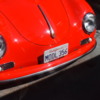

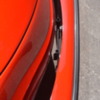
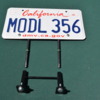
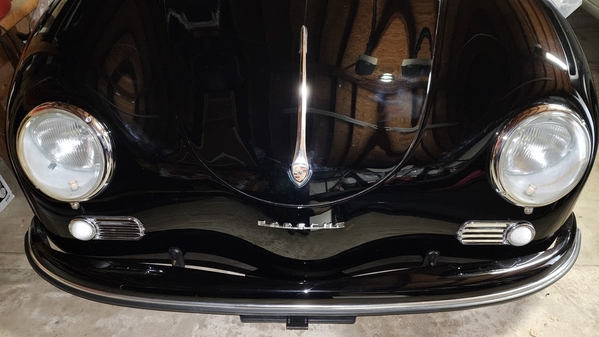

 ....here is my before /after photos...i usually just leave it up since it's a billboard for my car
....here is my before /after photos...i usually just leave it up since it's a billboard for my car  happy motoring
happy motoring 


